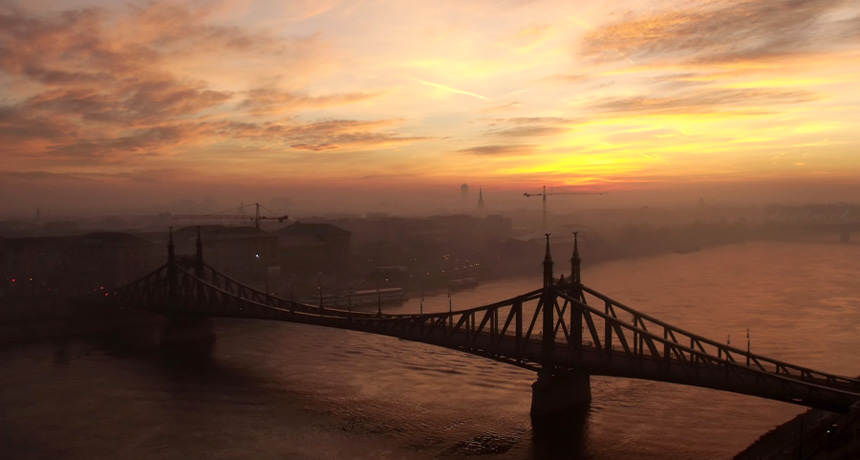
NOT-SO-CLEAR SKIES The haze of pollution may rein in evaporation, raising water levels in rivers like the Danube (shown), a new study concludes.
deadmind/Flickr (CC BY-NC-ND 2.0)
Swollen rivers may be the unexpected fallout of billowing smog.
By intercepting sunshine and shading the Earth, polluting particles can stifle evaporation, leaving extra water to flood local waterways. Dirty air can load rivers with up to 25 percent more water than they would have under cleaner skies, researchers report October 5 in Nature Geoscience.
“In a way, it makes sense,” says coauthor Peter Cox, a climate scientist at the University of Exeter in England. But many other factors also alter how water loops through the environment, including rainfall, large-scale irrigation and humidity, he says. “We weren’t sure —until we did this —on the overall impact,” of air pollution, he says.
To tease apart those factors and figure out each one’s influence on rivers, Cox and his colleagues turned to a computer simulation that estimates the volume of water surging through waterways under different conditions. One by one, the researchers plugged recorded data for factors such as climate conditions and air pollution concentrations collected from the Northern Hemisphere during the 20th century. Then they compared the predicted river volumes spit out from the simulation with actual river data collected during that time in Europe and North America.
When researchers fed aerosol data to the simulation, the modeled river levels best matched the actual river records: When smog rose, so did stream size. Though some factors, such as greenhouse gases, also impacted water levels, airborne particles had the largest effect in the most polluted waterways, the researchers found. After 1980, when clean air policies started to cut filth out of the atmosphere, researchers saw river basins drain a bit.
Climate scientist Dieter Gerten of the Potsdam Institute for Climate Impact Research in Germany was surprised that the link between aerosols and water flow was so strong. But, he says, “this should not question efforts to clean the air.” Rather, he says, it’s another argument to fight pollution and climate change, which can clearly alter water supplies in unexpected ways.
Other scientists were not sure what to make of the new research. “It’s a nice study, but there’s sort of these complicating factors,” says climatologist Martin Wild of the Institute for Atmospheric and Climate Science at ETH Zurich. The authors don’t examine the impact that aerosols have on rainfall, he notes, which may subsequently affect how much water gets into rivers. For instance, particles in clouds could cause smaller rain droplets, lessening downpours. So, he suggests, in the real world, brimming waterways can’t simply be linked to thicker air.
Cox acknowledges the point, but says that simplified studies are still useful. It’s important to note this connection between air pollution and water levels, he says, because that relationship can be plugged back into a bigger, more complicated computer simulation for forecasting climate change. Ultimately, he adds, “we’ll be approaching a better and better model.”







